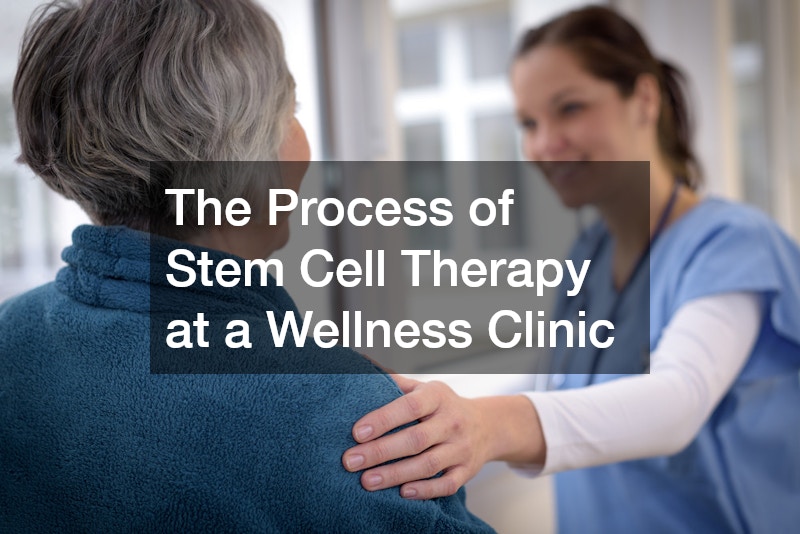The Process of Stem Cell Therapy at a Wellness Clinic
Stem cell therapy is gaining traction in wellness clinics worldwide, becoming a cornerstone for addressing a variety of health issues. As its popularity grows, individuals seek this innovative treatment for its potential benefits in improving overall well-being and treating various conditions.
At the heart of this treatment is the promise of regenerative medicine, which focuses on repairing and regenerating damaged tissues. Wellness clinics are leveraging this promise to provide holistic health improvements that traditional approaches may not achieve.
The rising interest stems from stem cells’ ability to transform into different cell types, offering a fresh approach to healing and rejuvenation. Coupled with modern technology, wellness clinics can now harness these properties to offer personalized treatment plans.
What is Stem Cell Therapy?
Definition and Types of Stem Cells
Stem cell therapy involves using stem cells to repair or replace damaged tissues and organs, a process founded on robust scientific principles. There are several types of stem cells, including embryonic, adult, and induced pluripotent stem cells, each serving unique roles in therapy.
Embryonic stem cells can differentiate into any cell type, making them versatile but controversial due to ethical considerations. Adult stem cells, found in tissues such as bone marrow, are more limited in differentiation but are commonly used for therapies.
Induced pluripotent stem cells, genetically reprogrammed to behave like embryonic stem cells, offer a novel approach without ethical issues. Research continues to explore the full potential and safe applications of these stem cells in clinical settings.
Stem Cell Therapy in Wellness Clinics
Wellness clinics are incorporating stem cell therapy to emphasize total health improvement, beyond mere symptom relief. By integrating these treatments, clinics aim to help patients achieve long-term health benefits and vitality.
The holistic approach involves assessing the patient as a whole, considering lifestyle, diet, and mental well-being alongside stem cell treatments. This comprehensive method aligns with the philosophy of preventive and functional medicine, aiming for sustainable health solutions.
Clinics offer a serene environment where patients feel supported and informed throughout the therapy process. This setting helps to optimize patients’ experiences and outcomes, complementing the regenerative capabilities of stem cell treatments.
How Does the Therapy Process Work?
Initial Consultation and Assessment
The therapy process begins with a thorough consultation to determine a patient’s eligibility for treatment. During this session, practitioners evaluate medical history, current health status, and specific therapy goals.
This preliminary step ensures that the therapy plan is tailored to individual needs, balancing potential benefits with any risks. The assessment phase is crucial for creating a comprehensive and personalized treatment strategy.
Practitioners also educate patients about what to expect, fostering an open dialogue and addressing any concerns. A well-informed patient is more likely to experience satisfactory outcomes from their stem cell therapy journey.
Procedure and Techniques
Once a plan is in place, the next phase involves the actual procedure of harvesting and applying stem cells. Techniques vary depending on the type of stem cells used and the condition being treated.
For instance, mesenchymal stem cells are often extracted from the patient’s bone marrow or adipose tissue and injected into the targeted area. This minimally invasive approach ensures that the stem cells reach the site requiring repair.
Throughout the procedure, clinics employ advanced technology to optimize the viability and functionality of the stem cells. Following industry standards and safety protocols is paramount to achieving the best possible therapeutic outcomes.
What Conditions Can it Potentially Treat?
Common Health Issues Addressed
Stem cell therapy is primarily used to treat a range of chronic and degenerative conditions. Common applications include addressing orthopedic issues such as arthritis, sports injuries, and degenerative joint diseases.
The therapy is also leveraged for its regenerative potential in soft tissues, offering relief to those with muscular injuries or conditions like tendinitis. Beyond orthopedics, some clinics explore applications in dermatology and neurology.
As research continues to unveil new possibilities, the scope of treatable conditions is expanding, increasing accessibility for patients seeking alternative therapies. Clinical evidence supports the potential for improved healing and reduced inflammation in various conditions.
Emerging Areas of Application
Beyond established treatments, stem cell therapy continues to explore new frontiers, driven by emerging research and clinical trials. Innovative applications are being investigated in areas like cardiovascular diseases and neurodegenerative disorders.
The regenerative potential of stem cells is being tested in novel ways, such as treating conditions like multiple sclerosis, spinal cord injuries, and even certain autoimmune diseases. These explorations indicate a promising future for broader applications.
As the field progresses, therapy protocols and methods will continue to evolve, guided by new scientific insights and technological advancements. The objective remains to expand stem cell therapy’s impact on improving quality of life and medical outcomes.
What Are the Risks and Benefits?
Potential Benefits
Patients seeking stem cell therapy are often motivated by the potential benefits, including natural tissue repair and faster recovery. These therapies aim to harness the body’s healing mechanisms to alleviate pain and enhance function.
Notably, patients report improved mobility, reduced inflammation, and a decrease in pain levels following treatment. The therapy also offers potential reductions in the need for surgery, serving as a less invasive alternative.
Moreover, the regenerative nature of stem cells can lead to improved quality of life and well-being, aligning with the holistic goals of wellness clinics. As more data becomes available, the understanding of benefits will continue to grow.
Associated Risks and Side Effects
Despite the promising outcomes, patients must be aware of the risks and side effects, which can include infection, allergic reactions, or complications from the procedure. Ensuring treatment is performed by qualified professionals mitigates such risks.
Clinics prioritize patient safety by adhering to established protocols and maintaining high standards of care. Discussing potential adverse effects during consultations empowers patients to make informed decisions about their health care.
Individuals must weigh these risks against the potential benefits, considering personal health circumstances. An understanding of both sides facilitates realistic expectations and greater satisfaction with treatment outcomes.


